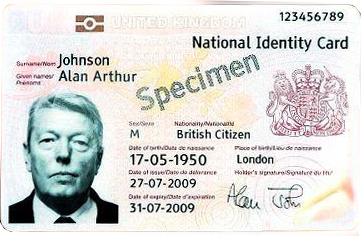Why do two people get different sentences for the same offence?
 |
| Mitigation can significantly reduce a drink driving sentence |
There is a, very minor, story in today’s Daily Mail about a businessman sentenced for drink driving that has led to quite a few
people asking why he received a fine of £488 (actually, he was fined £367 but
the Mail got that bit wrong) and a 14-month driving ban while Chris Tarrant was fined £6,000 and handed a 12-month ban for the same offence, even though Mr
Tarrant had a much lower alcohol level.
As I acted for the businessman, I’m tempted to say that the
difference must reflect the fact that one had a specialist drink driving solicitor
while the other was represented by a corporate crime expert, although I’m sure
that the truth is that the law on sentencing came into play. So, since people
are speculating about the differences in sentence I though we might as well
take a moment to look at how people are sentenced by criminal courts. We’ll use
drink driving as an example, but the principles apply to all criminal offences.
When a person appears in court for drink driving the sentence
ultimately imposed will depend a lot on the alcohol reading they provide at the
police station, so the higher the reading the higher the sentence will be.
However, because there is a minimum period of disqualification the sentences at
the bottom end tend to become a little skewed and there is often little to be
gained, in terms of sentence, from pleading guilty at the earliest opportunity.
That said, both reported cases involve people who did plead guilty as early as
possible.
According to the sentencing guidelines, a person who
provides a breath specimen of between 36 and 59 will receive a Band C fine and
a driving ban of between 12 and 16 months. That is the bracket Mr Tarrant was
in. Somebody who blows between 60 and 89 microgrammes of alcohol in 100 ml of
breath should also receive a Band C fine and a driving ban of between 17 and 22
months.
A Band C fine means that the court should look to impose a fine
equal to the person’s income for a week and a half; however, that can go up or
down depending on the mitigation put forward on their behalf. Those in the
higher bracket could find themselves with a community order rather than a fine
if the court decides that the offence is serious enough.
Because the fines are in bandings according to income a
person who earns more will pay more than a person who earns less. This is a
fair way of doing things because a £200 fine may financially cripple somebody
on a very low income whereas £200 may be nothing at all to another defendant so
the point of the banding is to ensure that the amount payable hurts all
defendants equally.
Let’s look at the driving ban now. As with the fine, the
driving ban will vary depending on the amount of alcohol consumed. We can see
that a person who blows 81 microgrammes of alcohol should be receiving a disqualification
of around 20 to 22 months given it is at the higher end of the relevant bracket,
which runs from 60 to 89 mcg. While somebody blowing 50 mcg should be receiving
a ban of around 15 months given that is towards the higher end of that bracket,
which runs from 36 to 59 mcgs. This is where the skewing caused by the minimum
disqualification period really shows itself along with the effect of a document
known as Home Office Circular no 46/1983, which directs the police not to
charge anybody with drink driving if they blow below 40 mcgs. This means that,
in effect, the lowest range only ever applies to people who blow 40 or above
and so if you are in that lower bracket you have a very good chance of
successfully arguing that you should be banned for 12 months. In my experience,
I would say that 90% of my clients who plead guilty after having blown below 60
mcgs will end up with a 12-month disqualification. Once you get into the higher
brackets courts tend to stick far more rigidly to the guidelines.
So, why in the two stories I’ve mentioned did one man
receive a 14-month driving ban and the other 12-months despite the former providing
a breath specimen some 31 mcgs higher than that of the former? This is where good
mitigation plays its part.
In deciding upon sentence, the court will decide on a
starting point then will decide whether the aggravating features of the offence
should increase the sentence or whether the mitigation should reduce it. Mr
Tarrant’s case appears to have been aggravated by the fact that he initially
lied to the police by claiming that he had been drinking at home not at the pub
he had visited. There were no aggravating features in the other case.
Mitigation has two parts, first there is personal mitigation
and then there are facts that mitigate the offence itself. The Mail has largely
set out the mitigation in my case; based on those facts I submitted to the
court that justice required a sentence much lower than the guidelines would
impose. The court agreed and cut the sentence accordingly.
So, if you were one of those people wondering how courts
arrive at their sentences then this is it: first they look at the guidelines
and find a starting point, then they look at aggravating and mitigating factors
and increase or reduce the sentence as appropriate. Once they’ve done that they
impose the sentence they feel best reflects the offending before them.


Comments
Post a Comment